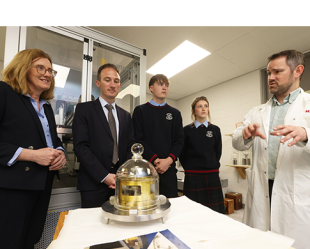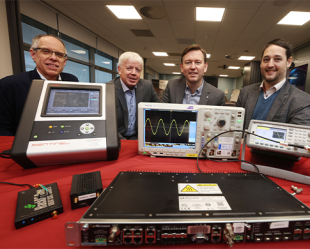- Homeowners warned not to cut corners when buying a potentially life-saving carbon monoxide detector
- NSAI urges people to only buy audible CO alarms, which display the CE Mark, comply with the EN 50291 standard and have end-of-life indicators
- Existing owners should check their devices for these four key safety features
- On average, six people die every year because of unintentional carbon monoxide poisoning - many more fall ill
It is often called the silent killer, with six people dying on average in Ireland every year as a result of unintentional carbon monoxide poisoning. The colourless, odourless and tasteless gas is produced anywhere fossil fuels are burned; as a result, more than 365,000 people are unaware that they are at risk in their own homes.
Despite this, the National Standards Authority of Ireland (NSAI) is warning that two in five adults do not have a CO detector installed where they live [1], potentially putting them and their family in grave danger. NSAI is strongly urging those who do not currently have a carbon monoxide alarm to get an appropriate one installed immediately. The call comes on the sixth annual Carbon Monoxide Awareness Week, which takes place from Monday, September 25th to Sunday, October 1st.
For Carbon Monoxide Awareness Week NSAI issued a four-step safety checklist, which people should consult when buying a CO detector.
- Buy an audible, not a passive, detector – passive detectors will not wake you up if carbon monoxide is present while you are asleep. Always install the alarm in a place where it can be heard easily.
- Ensure that the CO detector complies with European Standard EN 50291 – look for it on the box.
- CO alarms should always be CE Marked – look for the symbol on the alarm itself or the packaging. If it doesn’t display the CE Mark, don’t buy it.
- The active material within CO detectors deteriorates over time, meaning your family may not be getting the security it would expect. Always buy an alarm with an 'end-of-life' indicator so you know when it needs to be replaced. This indicator should not be confused with a 'fault' indicator. NSAI is advising people who already have a carbon monoxide alarm to check its end-of-life indicator and replace the entire device if required.
NSAI is also warning homeowners to take preventative action to avoid the creation of conditions where carbon monoxide can form in high levels. Regular inspection and annual maintenance of appliances, vents, flues and chimneys by a qualified service agent is strongly recommended.
“Carbon monoxide is a highly poisonous gas and, as it has no smell, colour or taste, can kill in as little as three minutes at high levels,” said NSAI Chief Executive, Geraldine Larkin.
“The gas is produced where any fossil fuel is burned, so it doesn’t just occur at home – caravans, tents, boats and workplaces are all at risk. Therefore, it is crucial everyone is aware of the dangers and takes precautions,” she added.
If you suspect carbon monoxide poisoning, stop using any fuel burning appliances, ventilate the property and visit a doctor immediately. Arrange for an inspection of your appliances by a registered gas installer, oil technician or qualified service agent for your fuel type before reusing the appliance, or if you burn coal in an open fireplace, arrange to have to chimney cleaned regularly. And of course, install an audible carbon monoxide alarm.
For more information on carbon monoxide alarms go to www.carbonmonoxide.ie or follow the hashtag, #COAwarenessWeek on social media.
[1] Source: Gas Networks Ireland



